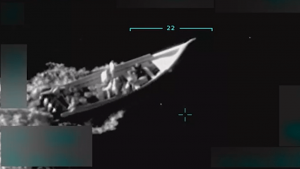A strange object from outside our Solar System was observed on 1 July, 2025, by the Asteroid Terrestrial impact Last Alert System, ATLAS, survey telescope in Rio Hurtado, Chile, well inside our Solar System.
It has a hyperbolic trajectory and travelled too fast to belong to our Solar System.
Scientists named it 3I/ATLAS and believed it is an interstellar comet.
It will be the third to be observed – the first was 1I Oumuamua which passed in 2017, and 2I Borisov in 2019.
It is the size of Manhattan Island, about 17 miles long and seven miles wide, traveling at 130 thousand miles per hour.
It was about 670 million kilometres away.
Scientists believe that at worst, it will be no more than 240 million kilometres from Earth.
Then, certain anomalies were observed: as it travelled towards the Sun, the icy tail which should be sublimating to vapour was unaffected, and it appears to slow down instead of accelerating.
On 29 October, 2025, it is supposed to reach the perihelion, or its closest point to the Sun at 1.4 astronomical unit (130 million miles or 210 million kilometres) where much of the icy tail is expected to be burnt off, propelling it faster away.
Spectroscopy analysis shows the plumes have more nickel than iron, suggesting an intelligent alien technology may have built it.
It emits light focussed in front of it, instead of being scattered.
Its decelerating, instead of accelerating towards the Sun, suggests it is braking intentionally, so as to remain in our Solar System’s orbit..
At a time, it disappeared from radar and was invisible to all telescopes monitoring it, only to re-appear in 20 minutes.
Prof Avi Loeb of Harvard University took special note of these anomalies.
This heightened interest in 3I/ATLAS.
By December, 2025, it is expected to return and be on the other side of the Sun.
It will be interesting to use advanced instruments and telescopes in the world to study a rare extra-Solar System body and see if there are any differences with ours and why.











